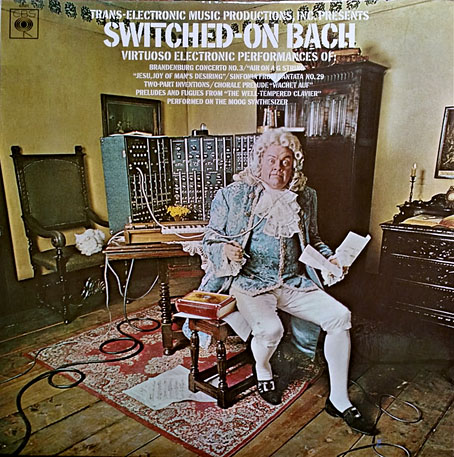
The first pressing of Switched-On Bach with a cover showing a Bach-alike confounded/dismayed by the sounds issuing from the machine behind him. The cover was soon swapped for the one below.
After mentioning the proliferation of Switched-On… synthesizer albums in the previous post, curiosity impelled me to see how many of these things were out there. A lot more than I expected is the answer, almost enough to make this cul-de-sac of novelty exploitation into a sub-genre of its own. As mentioned earlier, it was the huge success of Switched-On Bach (1968) by Wendy Carlos that began the trend. The album had a rare crossover appeal so that it could be sold to classical listeners as well as to a younger audience interested in electronic sounds, those for whom the words “switched on” echoed the druggy/erotic intersection of “turned on”. Carlos had an advantage over other musicians thanks to a long association with Robert Moog which meant she had a head start in exploring the recording potential of the new Moog synthesizer and innovations like Moog’s touch-sensitive keyboard. In 1968 few people could afford a Moog system; those who could usually needed to hire technicians like Paul Beaver and Bernie Krause to help them operate the thing. For a brief while it was enough to simply use the instrument to make strange noises, hence Mick Jagger’s droning score for Kenneth Anger’s Invocation of my Demon Brother (1969), and George Harrison’s preposterous Electronic Sound (1969), 44 minutes of very amateurish Moog-doodling. Switched-On Bach sounds a little primitive today—it sounds primitive next to its follow-up albums, The Well-Tempered Synthesizer (1969) and Switched-On Bach II (1973)—but Carlos and collaborators Rachel Elkind and Benjamin Folkman spent much more time refining their recording techniques than the knob-twiddling horde who rushed to capitalise on their success.
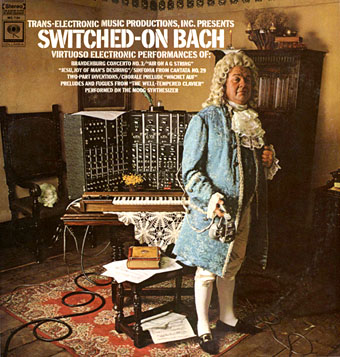
The rules of the Switched-On… idiom are as follows: a title that begins with the words “Switched-On”, obviously, although there’s a subset of the form in which an album may have a different title while a subtitle mentions something about “switched-on recordings”; the music must be cover versions of familiar songs or compositions, originality here is surplus to requirements; and it’s not essential but the cover art often alludes in some way to synthesizer technology and/or “the future”, with the latter represented by Space Age typefaces such as Amelia, Computer, Countdown or Data 70. I’ve not heard many of these albums, and I’m fairly certain that I don’t want to hear most of them, but I’ve heard enough Carlos cash-ins to know that the cover designs are often the best thing about them. The remastered CDs that Wendy Carlos released in the 1990s feature additional tracks that give some idea of the amount of work involved in the creation of each album. The early cash-ins, by contrast, tend to avoid time-consuming multi-track composition in favour of using a synthesizer as though it’s merely an expensive keyboard. The success of these albums musically may be gauged by the lack of reissues. They may be of interest to the so-bad-it’s-good “Incredibly Strange Music” crowd but I prefer to spend my time listening to other things. Beware.
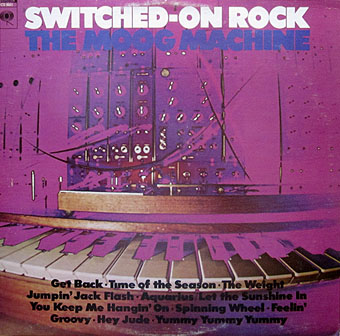
Switched-On Rock (1969) by The Moog Machine.
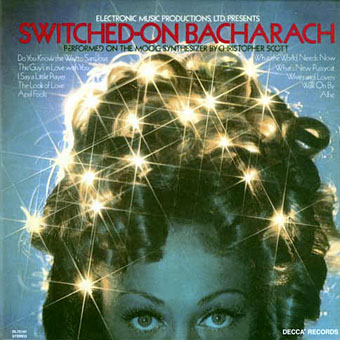
Switched-On Bacharach (1969) by Christopher Scott.
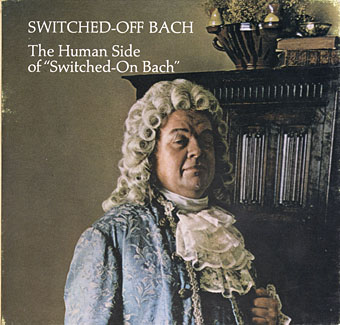
Switched-Off Bach (1969) by Various Artists.
CBS exploits the success of the electronic album by packaging a collection of earlier non-electronic recordings.
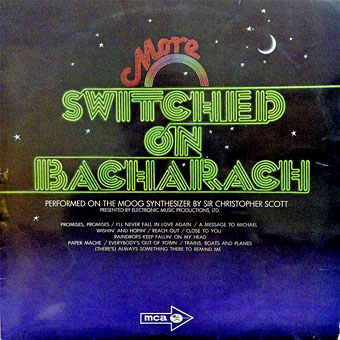
More Switched-On Bacharach (1970) by Sir Christopher Scott.
Was Christopher Scott really knighted or is this merely an affectation? I’ve no idea.
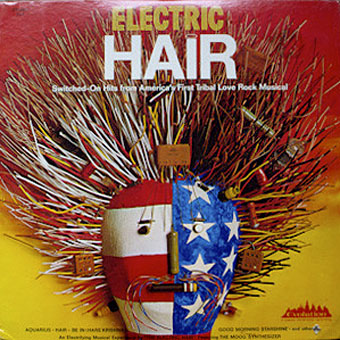
Electric Hair: Switched-On Hits From America’s First Tribal Love Rock Musical (1970) by The Electric Hair.
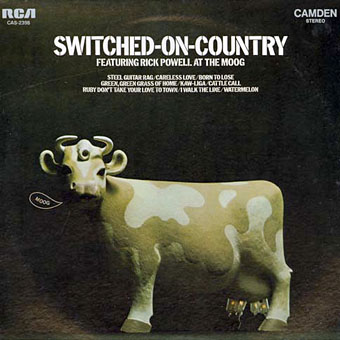
Switched-On-Country (1970) by Rick Powell.
Mike Melvoin was the first person to pair a cow with synthesizers (and have the animal saying “Moog”) on the cover of his collection of electronic rock renderings, The Plastic Cow Goes Moooooog (1969). Rick Powell’s album adds a redundant hyphen to its title while also using the same stencil typeface as the other album it’s imitating.
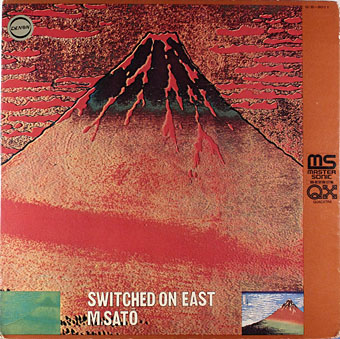
Switched On East (1971) by M. Sato.
Japanese folk tunes.
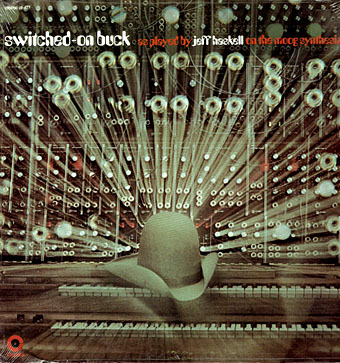
Switched-On Buck (1971) by Jeff Haskell.
Electronic music for rednecks?
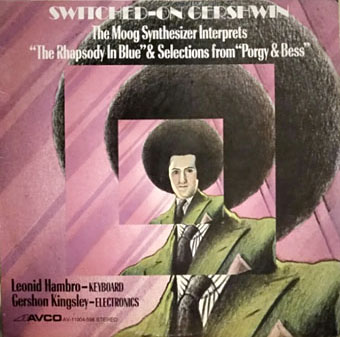
Switched-On Gershwin (1972) by Leonid Hambro And Gershon Kingsley.
A reissue of an album first released in 1970 which was also released in Australia as Switched-On Moog. Gershon Kingsley’s most famous composition, Popcorn, was a hit single worldwide in 1972 thanks to a cover version by Hot Butter.
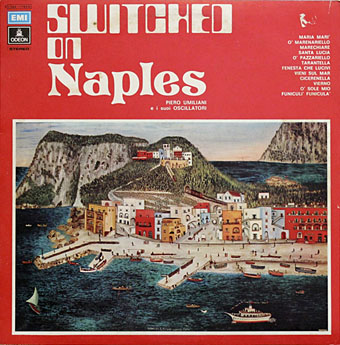
Switched On Naples (1972) by Piero Umiliani E I Suoi Oscillatori.
“This record is entirely carried out with electronic sounds. The melodic and contrapuntal lines are produced by the Putney VCS 3 Synthesizer; the percussions and the rhythmical accompaniment by the Lowrey small electronic brain; the bass by the Busilacchio keyboard electronic bass.”
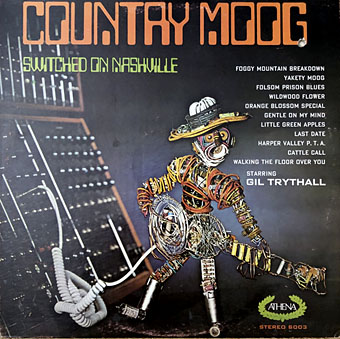
Country Moog (Switched On Nashville) (1972) by Gil Trythall.
Includes Yakety Moog among other alleged delights. You’d expect albums like this one to have appeared much sooner. I suspect the delay was a result of the time it took for synthesizers, especially the smaller, more affordable variety, to become widely accessible. Switched-On Bach continued to sell throughout the 1970s so there was a reason to keep following in its wake.
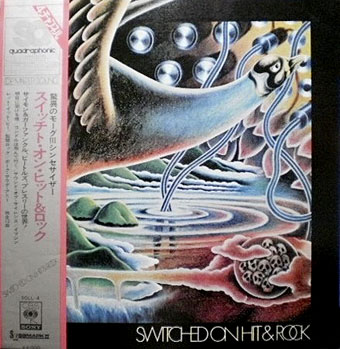
Switched On Hit & Rock (1972) by Tomita.
Tomita’s only foray into the rock world was this album of covers of songs by The Beatles, Simon & Garfunkel, etc. The sole reissue was a UK release two years later which was credited to “Electric Samurai”.
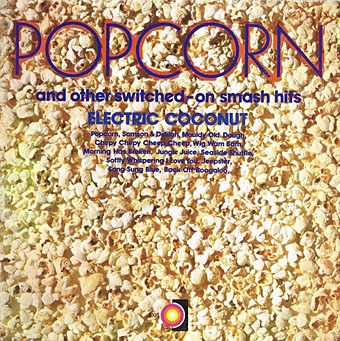
Popcorn And Other Switched-On Smash Hits (1973) by Electric Coconut.
An Australian album which manages to combine two cash-ins for the price of one.
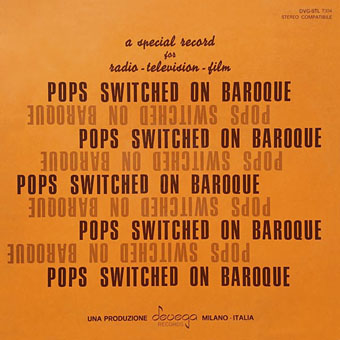
Pops Switched On Baroque (1973) by The Barococo Consort.
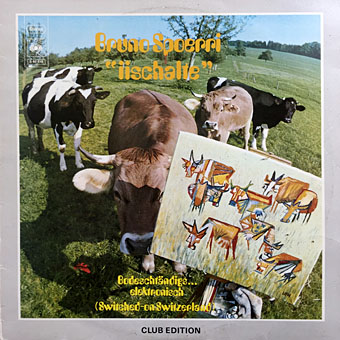
Iischalte (Switched-on Switzerland) (1974) by Bruno Spoerri.
More synth cows and electronic folk tunes. Bruno Spoerri later recorded the excellent Toy Planet album with Irmin Schmidt.
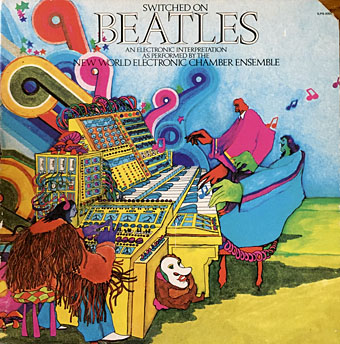
Switched On Beatles (1974) by New World Electronic Chamber Ensemble.
Nice cover art in the groovy style.
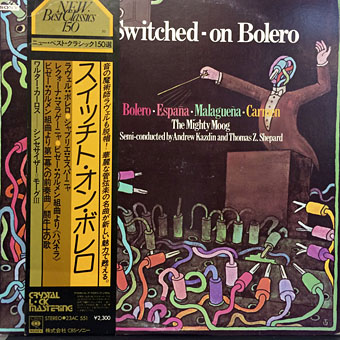
Switched-On Bolero (1978) by The Mighty Moog.
A reissue of Everything You Always Wanted To Hear On The Moog (But Were Afraid To Ask For) (1972).
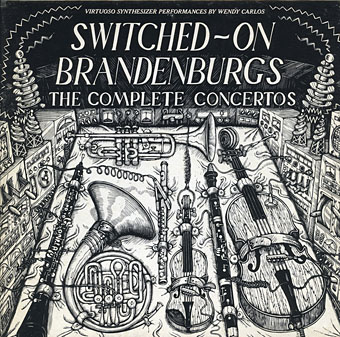
Switched-On Brandenburgs (The Complete Concertos) (1980) by Wendy Carlos.
Wendy returns to show the cash-in merchants how to do things properly. A double album containing all the earlier recordings of the Brandenburgs plus new recordings of the omitted concertos.
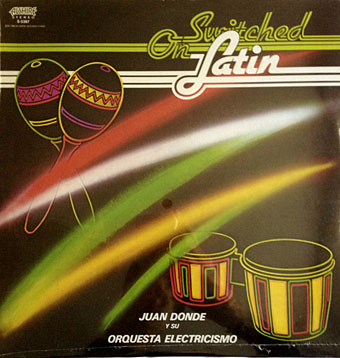
Switched On Latin (1982) by Juan Donde Y Su Orquesta Electricismo.
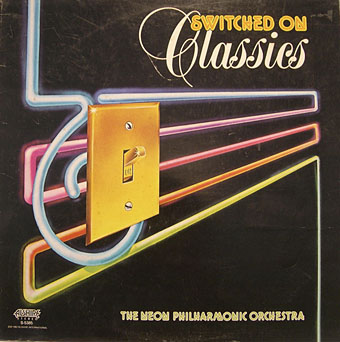
Switched On Classics (1982) by The Neon Philharmonic Orchestra.
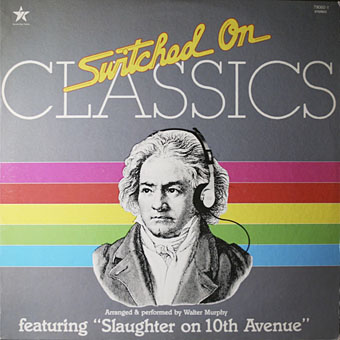
Switched On Classics (1983) by Walter Murphy.
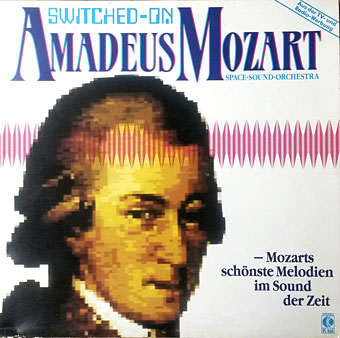
Switched-On Amadeus Mozart (1986) by Space-Sound-Orchestra.
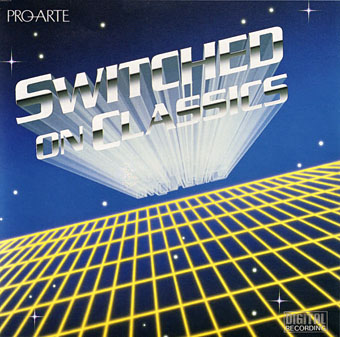
Switched On Classics (1987) by William Goldstein.
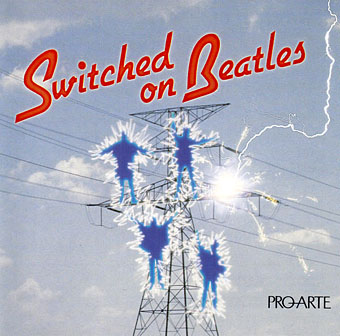
Switched On Beatles (1988) by Tom Chase And Steve Rucker.
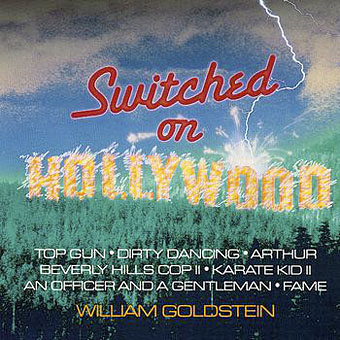
Switched On Hollywood (1988) by William Goldstein.
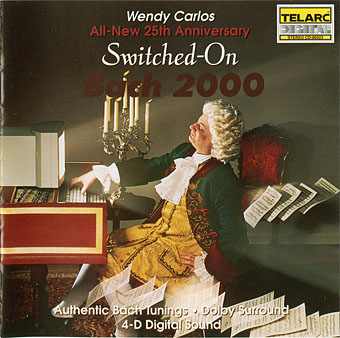
Switched-On Bach 2000 (1992) by Wendy Carlos.
Everything comes full circle with this album of re-recorded Bach compositions. “Switched-On” titles continue after this point but mostly in a knowing or ironic application. Two other examples are worth noting, however…
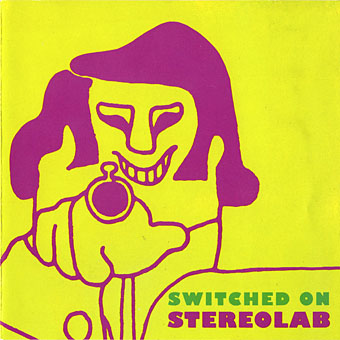
Switched On (1992) by Stereolab.
Stereolab’s music is a collage of borrowings—even the name of the group is taken from a Vanguard album—so the title of their series of compilation albums may be taken as a deliberate nod to the Switched-On trend.
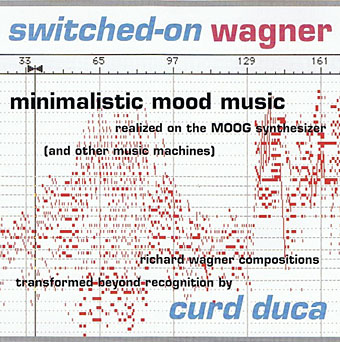
Switched-On Wagner (1996) by Curd Duca.
A late entry included because it represents the point at which the cash-in imperative falls away in favour of artistic statement. I also own a copy of this one.
Previously on { feuilleton }
• Switched On again
• Tomita’s Mind of the Universe
• Synapse: The Electronic Music Magazine, 1976–1979
• Tomita album covers
• Electronic Music Review
• A Clockwork Orange: The Complete Original Score
